Hello, everyone! This is Abi Cushman. I’ve had the privilege of writing illustration reviews here on Only Picture Books, and today, Ryan has given me the reins as interviewer. I’m thrilled to share this Author Interview with Charlotte Offsay, who has written five picture books to date, including How to Return a Monster, The Big Beach Cleanup, and A Grandma’s Magic. One of her picture books, The Quiet Forest, was illustrated by me, so it was especially fun to ask her a few questions about her process.
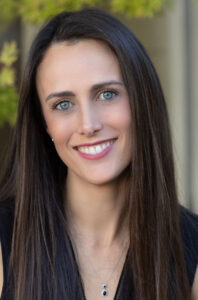 First, a little bit about Charlotte. Charlotte lives in Los Angeles, CA with her husband and two kids. She has a background in finance, and now she writes picture books and runs a very popular Instagram account, @picturebookrecommendations, where she shares picture books she loves.
First, a little bit about Charlotte. Charlotte lives in Los Angeles, CA with her husband and two kids. She has a background in finance, and now she writes picture books and runs a very popular Instagram account, @picturebookrecommendations, where she shares picture books she loves.
And now, let’s get to the interview.
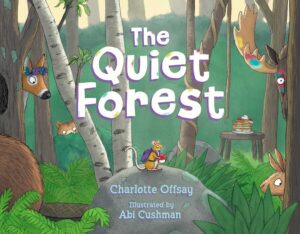 AC: Charlotte, when I was working on illustrating your manuscript, The Quiet Forest, I was doing my best NOT to talk to you about it because it seems like that’s the way it works in traditional publishing: that the author and illustrator not really communicate during the process. But now that it’s done, I’m so happy to ask you some questions!
AC: Charlotte, when I was working on illustrating your manuscript, The Quiet Forest, I was doing my best NOT to talk to you about it because it seems like that’s the way it works in traditional publishing: that the author and illustrator not really communicate during the process. But now that it’s done, I’m so happy to ask you some questions!
CO: I have been a big fan of your work for years and was delighted when our editor, Catherine Laudone (whose own OPB interview is here), said you had agreed to illustrate The Quiet Forest. It certainly is hard to not communicate during the book making process but I am delighted to get to chat more now, and I appreciate your enthusiasm and partnership!
AC: So first, I have to ask. You have a background in finance. How did you go from working in finance to making children’s books? And can we expect your next picture book to star a plucky financial analyst?
CO: I worked in finance for a number of years but decided to leave the corporate world to become a stay-at-home mom. I have always had a passion for stories and began writing for my children when my daughter was 3 and my son was 1.5 – they are now 8 and almost 10. I became inspired after an afternoon of baking with them and wrote my first picture book manuscript about it, which is actually now my fourth published picture book, Challah Day! I took a number of classes after writing that first manuscript, starting with UCLA extension’s introduction to picture book course, joined groups such as SCBWI and 12x12 and eventually met my critique partners and agent – the rest is history! It hadn’t occurred to me to write a finance themed book but perhaps I’ll have to add one to my Storystorm list this year!
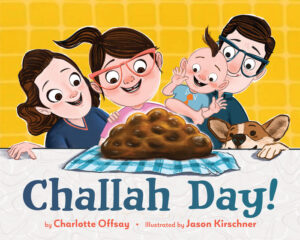 AC: That is so amazing that the first picture book manuscript you wrote ended up being published. I love Challah Day! Jason Kirschner’s illustrations are seriously so fun, and you really captured the joy of baking with kids in it.
AC: That is so amazing that the first picture book manuscript you wrote ended up being published. I love Challah Day! Jason Kirschner’s illustrations are seriously so fun, and you really captured the joy of baking with kids in it.
Speaking of joy, your Instagram page, @picturebookrecommendations, is devoted to picture books you love. What draws you to picture books?
CO: When friends and family heard that I was writing picture books and taking classes they would often ask for book recommendations. I created @picturebookrecommendations as a way to share the picture books that my kiddos and I love reading. I adore picture books. They are a pathway to learning, adventure, giggles, snuggles and connection. Picture books offer something for every age and the incredible way the illustrations and text elevate one another never fails to amaze me. I wholeheartedly believe that a passion for reading is one of the greatest gifts we can give children and an incredible way to better understand both one another and the world around us – all of which begins with picture books.
AC: I agree. Picture books are so special. I have such fond memories reading picture books as a kid and then as a parent.
What does a typical day look like for you as a writer?
CO: A typical day these days looks very different from when I first started writing. When I started out and was learning the nuts and bolts of picture books, my kiddos were tiny and I would fit my writing time into the cracks, obsessively trading calls with critique partners during nap time and jotting notes on my phone while pushing my kiddos in the stroller.
These days my kids are in elementary school and while mom life still keeps me busy, I tend to be able to carve out blocks of writing time – I love a good three-hour block if I can fit it into my schedule! I don’t write every day the way I used to, but I seem to be much more efficient (at least most of the time) when I do sit down to write.
That said, when I get a picture book idea that I just know needs to be a book, it crawls under my skin and I am incapable of doing anything else until I get my thoughts onto paper the way I want them. I revert to those obsessive habits, writing and editing non-stop for days on end, jotting notes on my phone in the carpool line and consuming endless amounts of chocolate as I write the same lines over and over again in different ways until I find the just right words.
AC: Tell me more about your process for developing a story after you get the idea. Does it vary from book to book?
CO: My process varies from book to book. Usually I write obsessively, trying to get the words bouncing around in my head onto paper without too much self-editing. Sometimes this means letting myself start in the middle or even the end. I don’t tend to plot out my books, but at some point I usually always reach a roadblock and need to get creative. Sometimes this means printing out my manuscripts and creating paper dummies with stick figures, which enables me to see where things need to be moved around. Other times this means a chart with characters and actual holes that need filling in – this is what I ended up needing to do for The Quiet Forest. Other times, it is heading to mentor texts and writing out the plot arcs of other books to see what my story might be missing, and still others I try an entirely new structure or character to see if that unlocks things.
I think my main throughline with my manuscripts though is that I always write my “heart” or my “why” at the top of my manuscript–what made me sit down and want to write it in the first place. I always find that a helpful light post as I search for my way through, but try to remain flexible as the way forward isn’t always visible!
AC: Ooh, that’s a really good way to stay focused while you’re writing or revising a story. On a related note, how do you ensure your stories have an It Factor–something special that makes them stand out from the crowd?
CO: I wish I had a good answer for this. Such a great question. Honestly, I think my best work comes from the heart. I try to write about the things that are most important to me or the things in my life that are consuming me at the time and channel them through a child lens. I know other authors who can generate story ideas in other ways, for example mashing up two things that don’t obviously go together (such as dragons and tacos), but for me, it needs to be personal to shine on the page. That said, I write a lot of personal stuff that definitely doesn’t shine and needs to sit in a drawer until I can find the right way to re-imagine it.
AC: I want to chat a little bit more about The Quiet Forest, which comes out March 12 from Paula Wiseman Books. This book has alliteration, onomatopoeia, and a cumulative structure. Did you set out to make a book with all these different literary elements? Or did you add another layer in as you revised?
CO: I had been looking to write a book about spreading kindness for a while. Every year I participate in Tara Lazar’s Storystorm and had written the same theme for a couple of years in a row but hadn’t been able to find the right way in. I had also been wanting to try writing a cumulative structure picture book for a while and had that on my Storystorm list as well. I decided to combine the two and sat down with a number of cumulative structure picture book texts to figure out how to write it. It ended up being a bit of a brain teaser to get the structure right. Picture books can look quite effortless in the finished product but at least for me the cumulative structure was quite challenging. The alliteration came quite early on and I then added in the onomatopoeia as a way to keep the text tight but hopefully also elevate the read-aloud experience.
AC: In The Quiet Forest, each animal is described at the beginning using alliteration, such as a mischievous mouse or a rattled rabbit. And then at the end, you use alliteration to show how each animal’s problems have been alleviated. Were there any characters or scenes you had to cut because you couldn’t get the alliteration to work from beginning to end?
CO: Oh my goodness, SO many. I swapped out a lot of different animals when the alliteration wouldn’t work right from the beginning but others got swapped out when the initial alliteration worked but then I couldn’t make them work in reverse – the story builds in mischief/chaos in one direction and then unwinds in kindness in the other. The story had a skunk at one point! I also wanted to make sure that each animal increased in size and could at least theoretically be found living in the same area of the world, which led to a lot of swapping out as well.
AC: Did you have to make a lot of changes to the manuscript after it was acquired?
CO: Catherine was instrumental in helping me with the structure and so once that was unlocked there were only minor word edits to be done after she acquired it.
AC: Oh, so did you work with Catherine on the story before she acquired it?
CO: Yes, I first connected with Catherine during an Inked Voices workshop and my agent later subbed the manuscript to her.
AC: Oh nice! I love hearing about different paths to getting a book acquired. And it’s always so satisfying when you click with an editor and get feedback that still fits in with your vision for the story.
Were the illustrations like what you were expecting? Were you surprised by anything? And be honest. Unless I would be insulted by your answer, in which case, feel free to tell lots of lies.
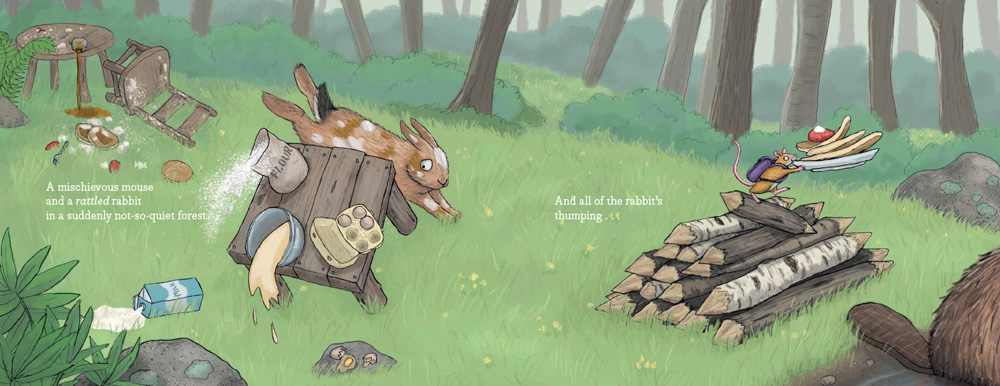 CO: I never could’ve dreamed up how wonderful these illustrations would be and am absolutely delighted by how much they elevate the book – they are simultaneously hilarious and huggable and I adore them. I did laugh out loud when I saw the moose painting. I spent SO much time making sure all the animals could realistically exist in the same place and that the sound words accurately fit the animals. So that was a big surprise but I wouldn’t want it any other way, the moose painting is PERFECT. I have no idea how you managed to cook up such a wonderful second storyline in the art and then so masterfully bring it all back together at the end – it is truly incredible.
CO: I never could’ve dreamed up how wonderful these illustrations would be and am absolutely delighted by how much they elevate the book – they are simultaneously hilarious and huggable and I adore them. I did laugh out loud when I saw the moose painting. I spent SO much time making sure all the animals could realistically exist in the same place and that the sound words accurately fit the animals. So that was a big surprise but I wouldn’t want it any other way, the moose painting is PERFECT. I have no idea how you managed to cook up such a wonderful second storyline in the art and then so masterfully bring it all back together at the end – it is truly incredible.
AC: Haha, oh yes, but you see, here in Connecticut, we have moose that are skilled in plein air painting. So don’t worry, it’s totally realistic.
What’s a book you wish you’d written?
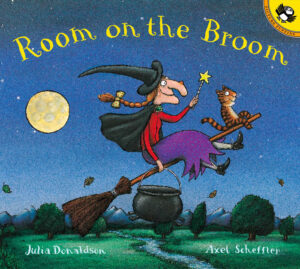 CO: Room on the Broom by Julia Donaldson. It is a true masterpiece. It is a brilliant read-aloud, the story is engaging, and I never tire of re-reading it. I think that is perhaps why I am particularly delighted with how our book has turned out… I am not even going to try and imply that we are rivaling the famous Julia Donaldson BUT I will boldly say that I think our book is SO much fun to read aloud and the story and characters make me giggle that much more with every re-read.
CO: Room on the Broom by Julia Donaldson. It is a true masterpiece. It is a brilliant read-aloud, the story is engaging, and I never tire of re-reading it. I think that is perhaps why I am particularly delighted with how our book has turned out… I am not even going to try and imply that we are rivaling the famous Julia Donaldson BUT I will boldly say that I think our book is SO much fun to read aloud and the story and characters make me giggle that much more with every re-read.
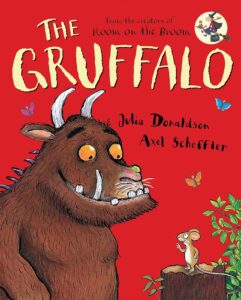 AC: Oh, I love Room on the Broom! It’s definitely fun to read aloud and one of my favorites too. And I adore Axel Scheffler’s illustrations. He’s a big influence on my art, actually. When I was first thinking about how to illustrate The Quiet Forest, I looked at a bunch of forest books, including The Gruffalo, which is also by Julia Donaldson and Axel Scheffler, to see how other people left room for the text even though the scenes had a lot of trees in them.
AC: Oh, I love Room on the Broom! It’s definitely fun to read aloud and one of my favorites too. And I adore Axel Scheffler’s illustrations. He’s a big influence on my art, actually. When I was first thinking about how to illustrate The Quiet Forest, I looked at a bunch of forest books, including The Gruffalo, which is also by Julia Donaldson and Axel Scheffler, to see how other people left room for the text even though the scenes had a lot of trees in them.
What’s something about writing or publishing that you wish you knew when you first started out?
CO: How many talented and incredible people I would get to meet along the way. One of my favorite parts of this journey has been getting to not only meet the people that I fangirl over, but also to actually come to call some of them friends. I get to connect with such incredibly talented people and it never gets old. The kidlit community is such a warm and inclusive space and I am so honored to be a part of it.
AC: I agree. The kidlit community is really wonderful. What are you excited to be working on now?
CO: I am currently brainstorming new story ideas and am excited to see where they lead me.
AC: I can’t wait to see what you come up with! And now for the speed round. Ready? Last podcast you listened to?
CO: Prof. Mel Rosenberg’s New Books Network Podcast as part of prep for an interview I did with him – highly recommend checking it out!
AC: Cutest reptile?
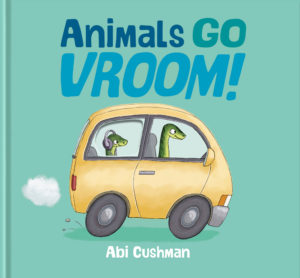 CO: I am not a big reptile fan but I do love your snake character in Animals Go Vroom! so let’s go with that!
CO: I am not a big reptile fan but I do love your snake character in Animals Go Vroom! so let’s go with that!
AC: Aww, thank you! Career you wanted as a kid?
CO: To be an author.
AC: Hooray! You did it! Who would play you in a TV movie about your life?
CO: Jennifer Aniston.
AC: Skydive or scuba dive?
CO: I’m terrified of heights, so scuba dive 100%!
AC: What’s the best question a kid ever asked you?
CO: If I could come back and visit their class again tomorrow.
AC: That is so sweet. I love that! Thank you, Charlotte, for answering all my questions and sharing your process with me.
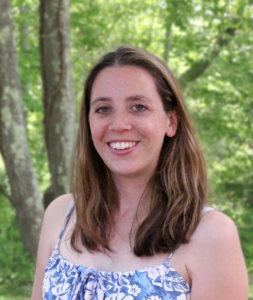
Abi Cushman is the author-illustrator of funny picture books, including Animals Go Vroom! (Viking), Soaked! (Viking), and her nonfiction debut, Wombats Are Pretty Weird: A [Not So] Serious Guide (Greenwillow, 2023). She has also worked as a web designer for over 15 years, and runs two popular websites of her own: MyHouseRabbit.com and AnimalFactGuide.com, which was named a Great Website for Kids by the American Library Association. In her spare time, Abi enjoys running, playing tennis, and eating nachos. (Yes, at the same time.) She lives on the Connecticut shoreline with her husband and two kids.
For exclusive sneak peeks, wombats, and special giveaways, subscribe to Abi’s newsletter.

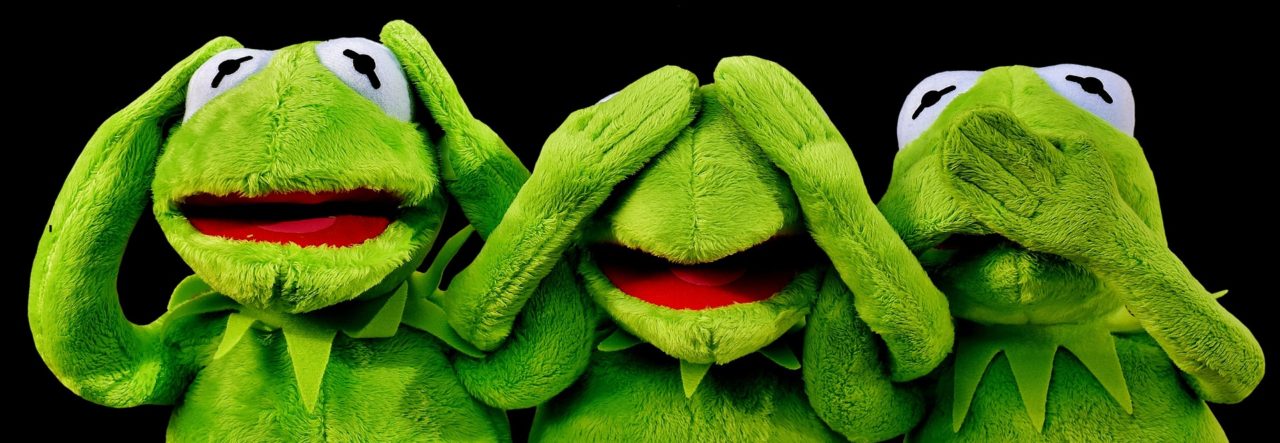
Charlotte and Abi, I cannot wait to see the simultaneous hilariousness and hugs.
Totally!
Great interview!
Abi did a great job here, as did Charlotte. No doubt about it.
**I’ll have to see if Abi will come back and handle more interviews in the future! 🙂
I love that Abi and Charlotte got a chance to talk after collaborating on The Quiet Forest. Thanks for sharing this interview. Looking forward to reading your book!